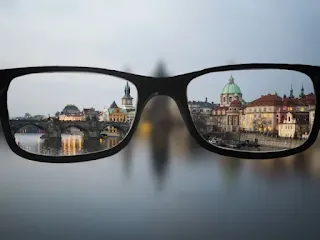Myopia, often known as shortsightedness, is a common eye condition that causes fuzzy views of distant objects. It occurs when the eye's focusing components are distorted.
It is thought to be mainly inherited, but it has also been linked to extended attention on close-up objects and limited outdoor play during early development years. Numerous medications have been developed to decrease the progression of myopia.
The objects in the distant seem fuzzy.
Long-distance objects may look hazy and out of focus if you have short vision. This happens when light cannot concentrate directly on the back of the retina because to an overly steep curvature of the cornea, the transparent front surface of your eye, or an excessively long eyeball.
Shortsightedness is most commonly developed throughout your early teens or youth. It can run in families and is commonly related with a childhood development stage characterized by intense close labor and little time spent outside.
To correct your distance vision, you will usually need to use prescription glasses or contact lenses. Adults may benefit from laser refractive surgery, which can restore clear, sharp vision. When you are older than forty, you may observe a little decline in the demand for myopia. This is because as you age, your lenses become less flexible and more stiff; as a result, for the majority of people, their myopic prescription remains quite stable until they are approximately fifty years old.
The objects in the near vicinity look clear.
The focusing system of the eye fails in nearsightedness (myopia), making distant things seem blurry. Light rays do not concentrate properly on the retina in the rear of the eye because the cornea, the transparent front surface of the eye, is either too sharply curved or the eye is longer front to back than typical.
This prevalent condition affects people of all ages, albeit it most commonly presents in infancy and adolescence. It is thought to be caused in part by children who spend too much time on adjacent hobbies such as reading or using portable technology. It might also be due to lack outside time in natural light.
The simplest way to find out if you or your child is nearsighted is to arrange an eye test with an eye chart. In addition to correcting any blurry or distant vision, this allows an optometrist or ophthalmologist to determine your prescription for glasses or contact lenses.
Objects in the middle distance look fuzzy.
Those with normal vision may easily see stuff both close up and far away. This is because the cornea, or transparent front surface of the eye, and the internal lens are ideally formed to ensure that an image falls on the retina precisely when the brain focuses on an item. When a person looks at a near object, their ciliary muscles contract, altering the curvature of the lens and sharpening the image's focus. We call this method accommodation.
Myopia, or short sight, is caused by either an abnormally long eyeball or an insufficiently steep corneal curvature. When an item is viewed up close, light enters the eye at an angle and travels across the retina before reaching the retina's center. The message delivered to the brain is so unclear. Hyperopia, a disorder in which the eyeball or cornea is shorter than normal, causes some people to experience blurry vision at all distances.
Objects in close proximity seem clear.
Items in close proximity look clear to persons with short vision. Light concentrates in front of the retina in the back of your eye because the cornea, the clear front surface of your eye, bends too sharply or because your eyeball is too long. It often begins in infancy or early adolescence and is rather common.
Shortsightedness, often known as myopia, can be treated with glasses or contact lenses. The shape of the lenses promotes optimum eye focus. Opticians will advise you on the optimal prescription for your eyesight based on a list of NHS possibilities.
The majority of myopics are able to manage their symptoms and avoid developing new visual problems. However, having myopia may increase your risk of acquiring glaucoma and retinal detachments later in life. Routine eye exams are therefore necessary. The NHS provides them for free to children and teens participating in full-time courses.




